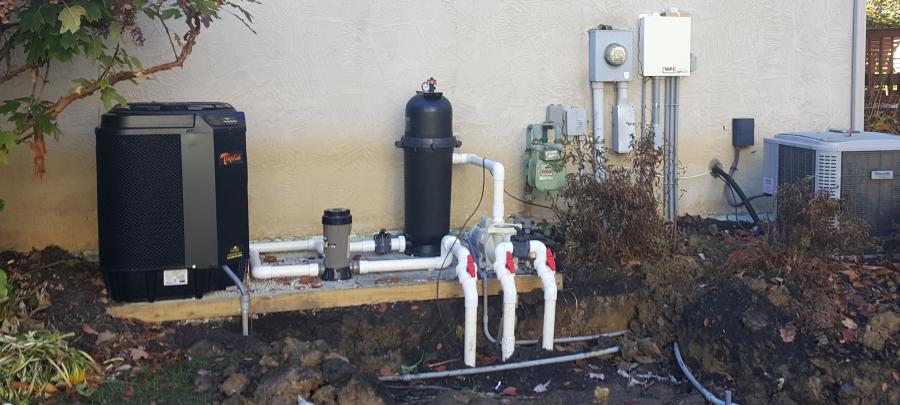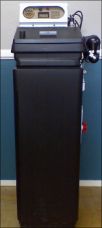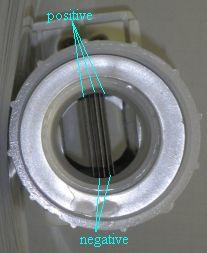Salt Water Chlorine Generators: History, Types, Operation, and Considerations


Early generation
salt chlorinator
Getting their start in Australia, Salt Water Chlorine Generators (SWCG) have been around since the 1960's. Somewhere in the mid-1980's they found there way to the US market. However, the earlier units where big, messy, created caustic by-products that you had to dispose of, and had to be continuously replenished with new salt (about 50lbs per month). Luckily for us, the units that are made today fix all the problems that plagued the "brine units" of the past.

Salt system
control panel
Today's SWCG have two major parts. We'll start with the control panel, which houses all the electronics and user interface functionality of the system. Typically, the differences between the different models any manufacturer offers can all be found in the control panel. They can be as simple as an on/off button, output up/down buttons, and a shock/turbo button. The higher end models have the ability to control your pump on a timed schedule, compensate output for water temperature changes, multiple amperage settings, tell you if your salt is low (and how many pounds to add to bring it back up to spec), automatic scheduled cell polarity reversing to clean the cell of any scale build up, and more. The second part of the system is the cell. It is made up of anywhere between three and seven blades of titanium that are coated in a very thin layer of ruthenium or iridium, and encased in a PVC housing that is designed to be plumbed in-line with the rest of your pool equipment. It is recommended to be the last piece of equipment before returning to the pool, because super chlorinated water is highly corrosive (more on this later). A third, minor but necessary, component is the sensor(s). At the very least the system should have a flow sensor, so that the system shuts itself off if there is no water flow. Other commonly incorporated sensors would include temperature, salt level, and possibly ORP.

Inside a SCG cell
By now you're probably thinking, "That's it? That can't be right, how on Earth do those simple three things turn salt into chlorine?" How the SWCG does this is by electrolysis. The blades that are in the cell are orientated so that the first, third, fifth, and seventh will have a positive charge, and the second, fourth, and sixth will have a negative charge. When the salt dissolves into the water the atoms of the molecule dissociate into their respective ions, creating sodium (Na+) ions and chloride (Cl-) ions. When the solution flows past the blades, the negative chloride ions migrate to the positive anode and lose their electrons to become chlorine gas. Which in turn reacts with the water creating HOCl, or hypochlorous acid, which is the active sanitizer. And, at the right pH range (7.2-7.6), some HOCl will disassociate into H+ and OCl-. The OCl- acts as your oxidizer. Pools with a high pH will see more HOCl disassociation, therefore less hypochlorous acid to fight algae and bacteria. Hypochlorous acid reduces back to chloride ions after it has done its duty.
Probably the most common concern with salt water pools is the corrosion potential. The fact is that pool water with 4ppm of free chlorine is 10 times more corrosive than pool water with 4,000ppm of salt. Typical SWCG systems only need between 2,500-4,000ppm of salt. For comparison, the ocean has 35,000ppm, and human tears/body is around 5,000-8,000. Taste threshold for salt is around 4,000ppm. One item you will need to keep in mind is that many pool heaters have a heat exchanger that will not stand up to these concentrations of salt.
The most common benefit of a SWCG is convenience. There's no more buying, storing, or adding chlorine. After the user figures out where their output needs to be for their pool and bather load, it's pretty much hands-off, more so for fiberglass owners than vinyl or gunite. You will find other opinions out there that will disagree with the lower maintenance benefit. They state that you still have to test/monitor your pool chemistry, and users with SWCG are now adding muriatic acid every week instead of chlorine. A side effect of SWCG is the production of sodium hydroxide (NaOH), this is a strong base and needs the addition of acid to counterbalance. I categorize this argument as a 'pool theory' vs 'pool reality' discussion. Yes, SWCG users do still have to monitor their pool chemistry as often as those without, but only for the first two years. After this point they have a firm grasp of where their SWCG output needs to be, when to shock/boost production, and how much and when to add muriatic. After that the SWCG user can cut their chemistry testing by at least half, sometimes to one quarter. And to go beyond that, there are products, like AutoPilot's Total Control System that will monitor your pool's pH/ORP level and automatically inject muriatic on an as needed basis.
There is also less risk of over chlorinating the water, giving you less potential for corrosion. On the other side of that, there should never be a shortage of chlorine, so no more "chlorine" smell or red eyes due to chloramines (combined chlorine). As for cost savings, it varies due to the high initial cost ($1,000-$3,500). For gunite pools, who are spending close to $1,000 a year on chlorine, this will be a pretty significant benefit. However, for fiberglass owners, who maybe spend around $150-$200, the return on investment is just not there as quickly.
And finally, just some things to keep in mind and other points to make about SWCGs. When you first install a SWCG you put in a lot of salt, but since salt doesn't evaporate, you never have to add that much again. Salt from the pool water is only lost from splashout, back-washing, winterizing, or dilution due to rainwater. Typically, SWCG owners only add salt one time a year, and it's hardly ever more than 1-3 40lb bags (one bag is around $10 retail). You will also need to add, if you haven't already, some cyanuric acid (CYA). Cyanuric acid is an agent that helps prevent the Sun's UV rays from burning of the free chlorine. A good range of CYA is 30ppm (for fiberglass pools) to 50ppm (for gunite). Be careful with this stuff though. If you over do it your chlorine will have a much harder time sanitizing. If you don't do it at all, your SWCG will have a very hard time keeping up with the chlorine demand, and it will wear out your cell very rapidly.
Pool Article Categories:
Copyright Luxury Pools and Living 2005-2024
Cookie Policy | Privacy Policy